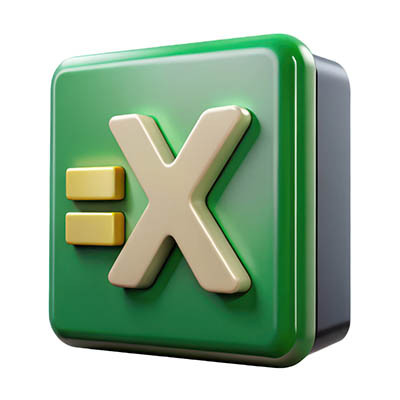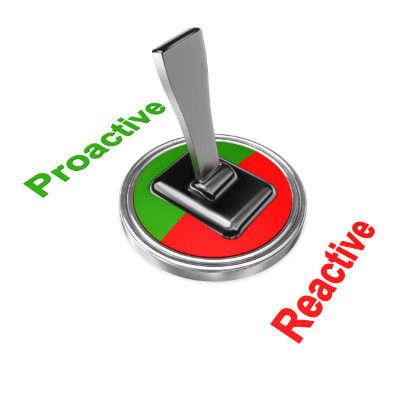How productive are your employees, really? You want your investments in people and resources to yield results, but if those results aren’t visible, either because they don’t exist or because it’s so slow that it might as well not be there, then you have a real problem on your hands. Today, we’re discussing how you can use productivity to measure efficiency and how you can overcome the struggle of not being where you want to be.
Capital Technology Group Blog
Word processors are a part of office life, so it helps to know as much as you can about them. Today, we want to think about ways you can adjust text size, especially after you copy and paste content into a document. Not only will we cover how to do so as plain text, but also how to use keyboard shortcuts to increase or decrease text size and add special formatting without navigating clunky menus.
Remember Tay? Microsoft's 2016 AI chatbot that the internet turned into a wildly offensive, racist mess in just 16 hours? It was a spectacular, public failure that proved one thing: Garbage In, Garbage Out.
Today, the garbage isn't just on Twitter. It's the highly sensitive, proprietary data your own employees are accidentally leaking into the public domain.
The very tools designed to make our jobs easier, faster, and more flexible often feel like the source of our deepest stress. From the endless barrage of email notifications to the pressure of being always available, modern work technology is a true double-edged sword.
So, does technology create stress or remove stress in the workplace? The answer, like most things in the digital age, is both.
Open your Profit & Loss statement. I'm willing to bet that the IT line is sitting squarely in the expense column, right next to rent, electricity, and paper towels.
For many business owners, IT is seen as a necessary evil; a cost center, a black hole they just have to throw money into. When you see a technology bill, you get that double-take and cringe. Your primary goal is to minimize this cost; often to the point of avoidance.
The shift to remote work has transformed business, yet the virtual meeting remains a point of friction. A poorly executed remote meeting isn't just a time-waster; it drains productivity and damages company culture.
With the right strategy and tools, your remote meetings can be even more effective and engaging than in-person ones.
Microsoft Excel is a powerful tool that businesses leverage every day to store, track, and report on data, but it can be tedious to work in the document without knowing all of its little tricks. Today, we want to share with you one that could save you valuable clicks and time spent copying and pasting values. You’ll learn how to enter the same data into multiple cells at once.
Your business technology is not just a tool; it's the very foundation upon which modern enterprises are built. From optimizing operations to enhancing customer experiences, strategic technology implementation is paramount for growth and competitive advantage. We invest heavily in it, pour resources into its adoption, and celebrate its initial successes. What happens when that investment starts to become a liability, however?
Today, simply working harder isn't enough; you need to work smarter. This is where productivity software comes into play. Far from being just a suite of digital tools, this technology fundamentally transforms the way employees operate, leading to dramatic gains in efficiency and overall output. How does this software actually work to boost your team's performance? This month, let's dive into the mechanisms that make it an indispensable asset for the modern workplace.
How do you approach decision-making for your business? While it might be tempting to forego critical thought and rely on your gut instinct for major decisions, we urge you to instead follow the data and observe what it’s trying to tell you. If data analysis sounds like pulling teeth, however, you’ll be relieved to know that AI tools have made it significantly easier to analyze large amounts of data and make more informed decisions.
Your business has a specific goal in mind, whether that’s providing customers with a product or providing them with a service. On the back end of that goal is a lot of administrative work, the stuff that happens behind the scenes to facilitate that goal. Artificial intelligence is a tool that can help your business be more efficient and effective with this behind-the-scenes work, and we’ll show you how.
Whatever type of business you operate, you likely do so with the intention of assisting your clients, customers, or patrons with a specific goal. It isn’t as though you started a business because you wanted to do all the administrative work… right?
Fortunately, modern technology offers a way out, especially now that artificial intelligence is readily available. Let’s go over three ways that AI could help do the busy work on your behalf, and touch on just how much it could wind up saving you.
You probably want a certain onboarding experience for any new hires: meeting the team, getting their computer set up, setting up all necessary accounts, and going through any necessary training. In reality, you’re likely going to spend most of that time ensuring secure access to all necessary resources, and until they get into the swing of things, they’ll feel a little awkward and out of the loop rather than a part of the team. Here’s how you can build a better onboarding process to make sure this doesn’t happen.
I’m sure you have some idea of what you’d want any new hire’s first day to be like. They’re welcomed by the team, and brought to their workstation where everything is ready for them to get to business: all accounts are set up, the laptop works, and there’s a game plan for them to follow.
In reality, however, this first day is likely spent obtaining any available laptop and ensuring your new hire has the secure access they need. Meanwhile, the new team member feels increasingly like an outsider, rather than a contributor, as they jump through these hoops. Less appealing than the alternative, right?
Let’s discuss how crucial it is to get the onboarding experience right.
How many duties and responsibilities fall on you as a business owner? More often than not, you’ll find yourself wearing multiple hats, picking up the slack where you can because you just don’t have the time or the resources to hire staff for certain specialized tasks. Unfortunately, IT maintenance and management is one such role that falls to the wayside all too often—but it doesn’t have to.
Anyone that runs a business with employees knows just how important their sustained efforts are to the success of the endeavor. Unfortunately, not every person always puts in maximum effort or does things the way they’re intended to be done. This can be an issue for the bottom line. Today, we will be looking at the issue of time theft and what you can do about it.
Chances are you use your Internet browser more than any other tool on your computer, so why not make the most of it? Today, we’re focusing on how you can stay organized and productive with your web browser. We’ll cover all you need to know about tabs, including best practices and shortcuts that are sure to see a lot of use.
You hear a lot about Artificial Intelligence these days. It can sound a bit like something out of a sci-fi movie, maybe even a little daunting. However, what if I told you AI could be working quietly behind the scenes in many businesses, acting like the most efficient, data-savvy coworker you've ever had?
Today (as of when this was posted) is Friday, so ideally, the feeling in the office would be one of happy anticipation for the weekend… but what if a server crashes, and work gets put on pause, but all the deadlines still stand? This would undoubtedly put a damper on the weekend, and that’s the least of your worries. Who’s going to fix the server?
This kind of situation is precisely why modern businesses can’t afford to wait for things to go wrong, and need to have a resource on their side to proactively address these kinds of issues and catastrophes.




















